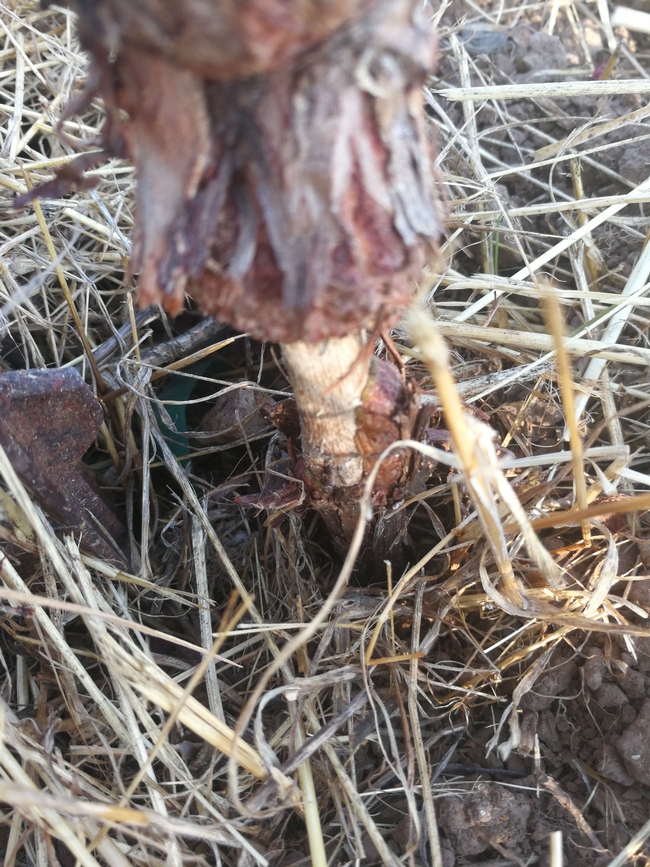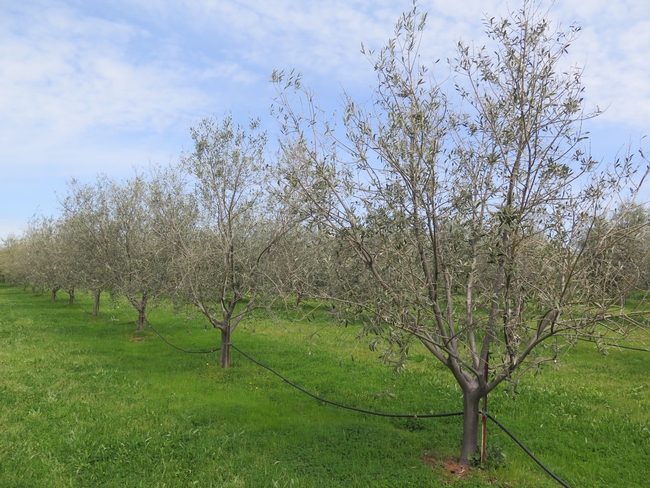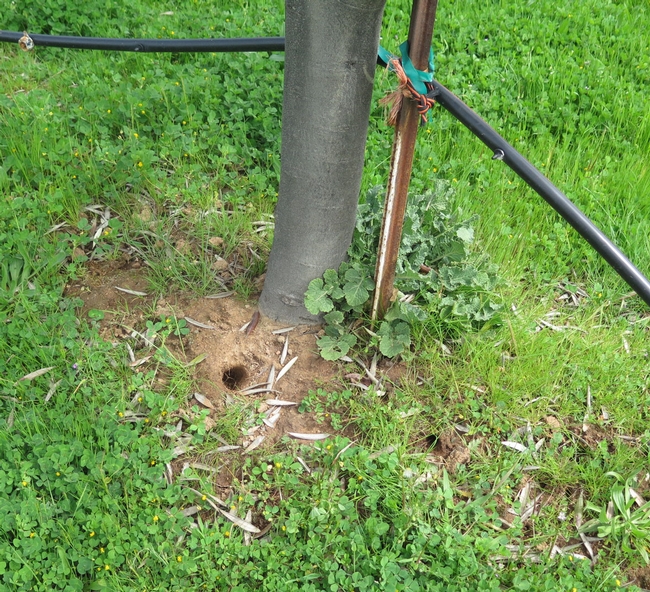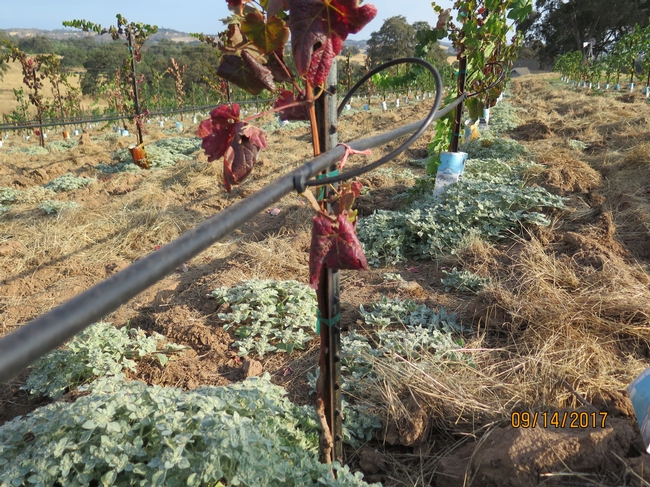- Author: Lynn Wunderlich

Why all of this vole damage now? Voles love tall grass, which protects them from their natural raptor predators. Our heavy rainfall in 2016-2017 and in the current season produced a large amount of grassy groundcover. If this tall grass is not controlled in the tree or vine row, it provides the perfect environment for voles-who make very shallow "runs"-to nibble on tree and vine trunks. This nibbling can be just below the soil-trunk line, and isn't always obvious. On a farm call to visit a mature olive orchard, the canopy was so 

But truly, vole damage is no laughing matter. Especially for young orchards and vineyards, where voles can kill the trees and vines. Young vines with severe vole damage can turn red-sometimes being confused with virus 
So, what can growers do to manage voles? #1: keep the vegetation down near the trunks of vines and trees. Cover crops should be mowed and vegetation kept down in between the rows and on the borders. Beware of adjacent open spaces, meadows, or other lands where voles may be entering. Look for vole damage and monitor regularly-look for burrow holes and runs. Vole populations can reach a high peak and then crash, or they can continue to grow and cause problems. Activity can be noted by the freshness of the runs, bare ground, pellets, and fur. Exclusion using a tree guard barrier or along the fence line is difficult. Since voles burrow just below ground, the barrier needs to be buried at least 6 inches to be effective. Traps can be used effectively in the vole runs, since voles don't deviate much from their habit trails. Rodenticides in baits (anti-coagulants that require multiple feedings or zinc phosphide) are restricted use-check with your agricultural commissioner before applying. You will need a permit or a licensed applicator to use them. UCCE Vertebrate Specialist Roger Baldwin (whose cool website you should really check out), is interested in getting an anti-feedant registered for use against vole damage in CA. This could be a very helpful tool, and I encourage you to fill out Roger's very brief survey here if you have voles and want a new tool to fight them.
You can find more information on voles by reading Roger's Chapter here.
Until next time...


